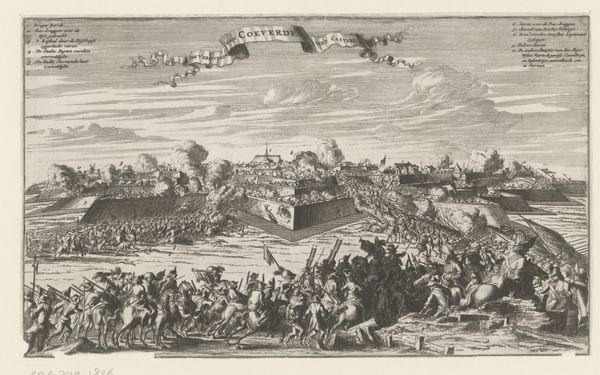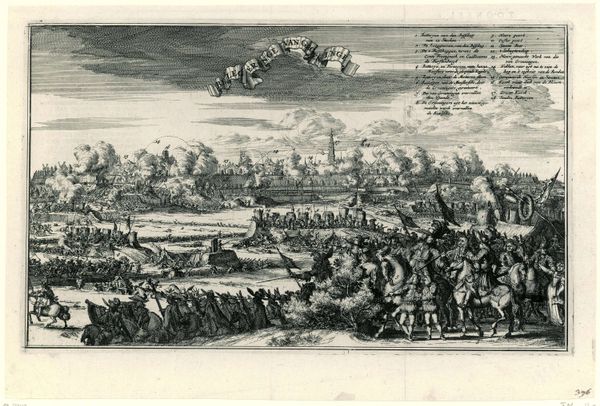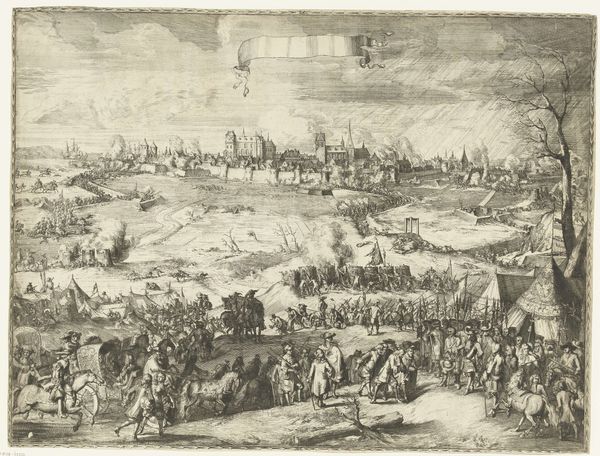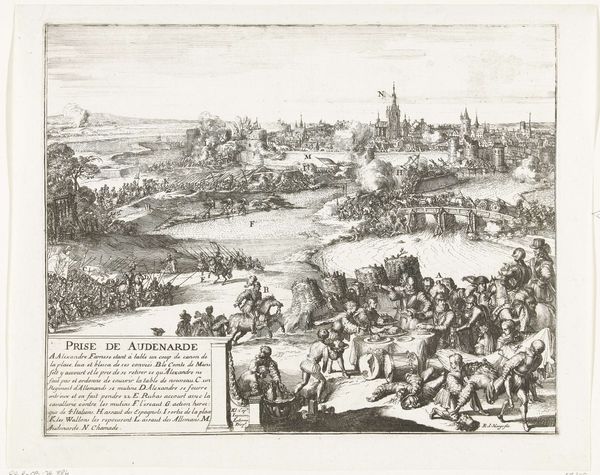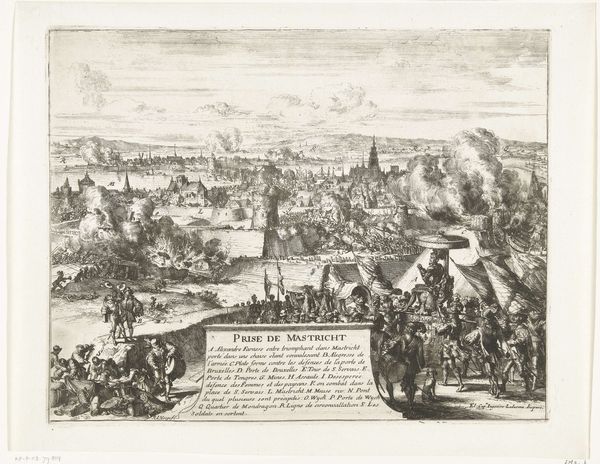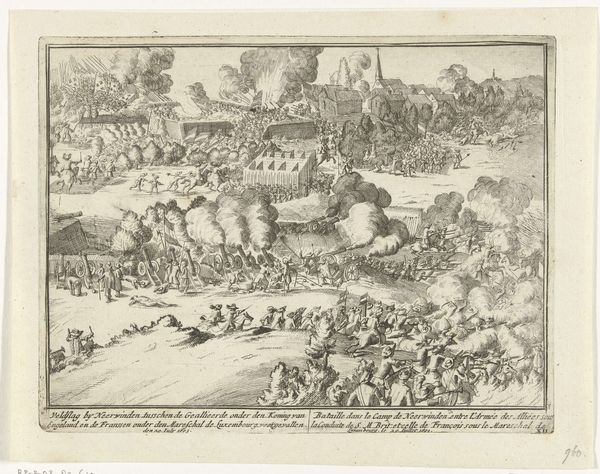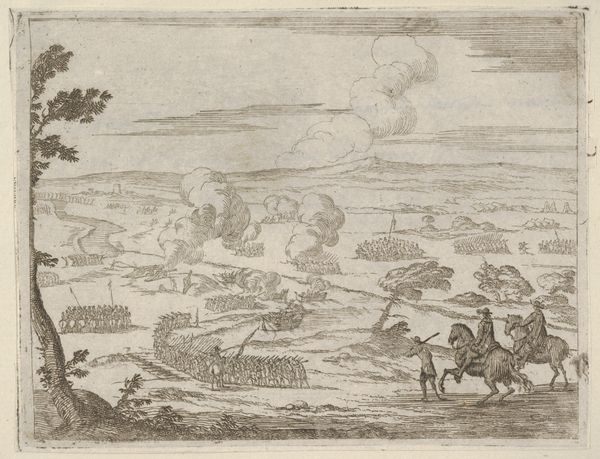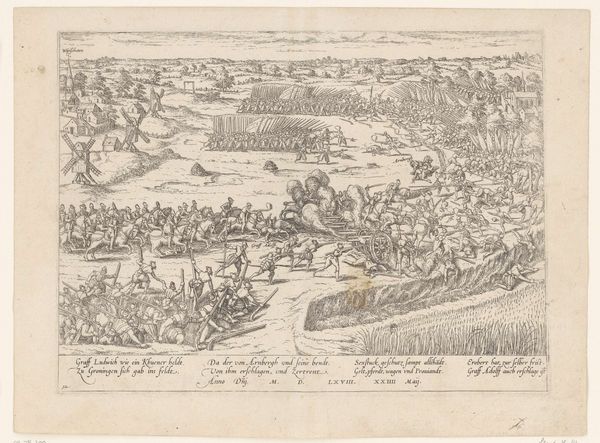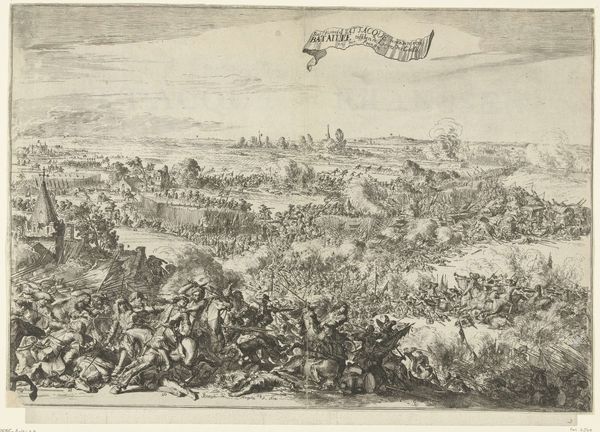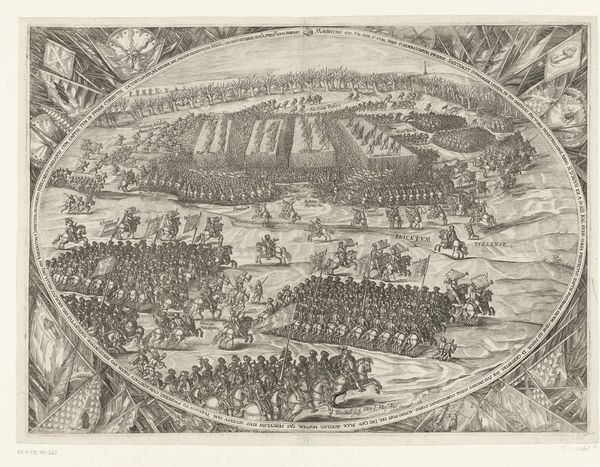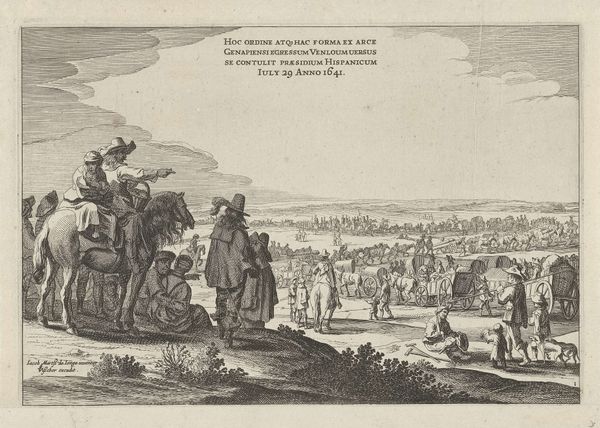
print, engraving
#
baroque
#
dutch-golden-age
# print
#
landscape
#
cityscape
#
history-painting
#
engraving
Dimensions: height 191 mm, width 273 mm
Copyright: Rijks Museum: Open Domain
Editor: Here we have "Beleg van Groningen, 1672," a print dating from 1672-1674 by an anonymous artist. It depicts a cityscape under siege. It's fascinating to see such detail rendered in engraving. What's your take on this work? Curator: Well, immediately, I’m drawn to the labor invested in producing this image. Think about the skilled craftsmanship required to create such a detailed engraving, and then the labour involved in producing multiple copies. How does the use of printmaking – a readily reproducible medium – shape our understanding of this historical event? Editor: That's interesting. I hadn't really considered that. It’s a depiction of warfare, right? To what extent does the choice of engraving as the medium for a war scene affect the work's accessibility to a wider audience, maybe even functioning as propaganda? Curator: Precisely. It invites questions about the purpose and audience. Was this meant to glorify the conflict, commemorate a victory, or perhaps serve as a warning? Considering the material production, could the mass dissemination of this image also be seen as a form of early information warfare, influencing public perception? Editor: So, looking beyond just the event, but the act of making art ABOUT that event, and distributing it? That does shift my perspective. Curator: Indeed. And the details are important: observe how the depiction of the city under attack contrasts with the neat rows of soldiers. What can we infer from that in regards to consumption and class? Editor: Okay, I am thinking of this less as a landscape or historical piece and more as an early form of mass media, impacting and influencing society. I learned a lot about the impact of prints and reproduction! Curator: And understanding art means examining its processes, not just appreciating an aesthetic! The means of its creation and dissemination influence the message.
Comments
No comments
Be the first to comment and join the conversation on the ultimate creative platform.
